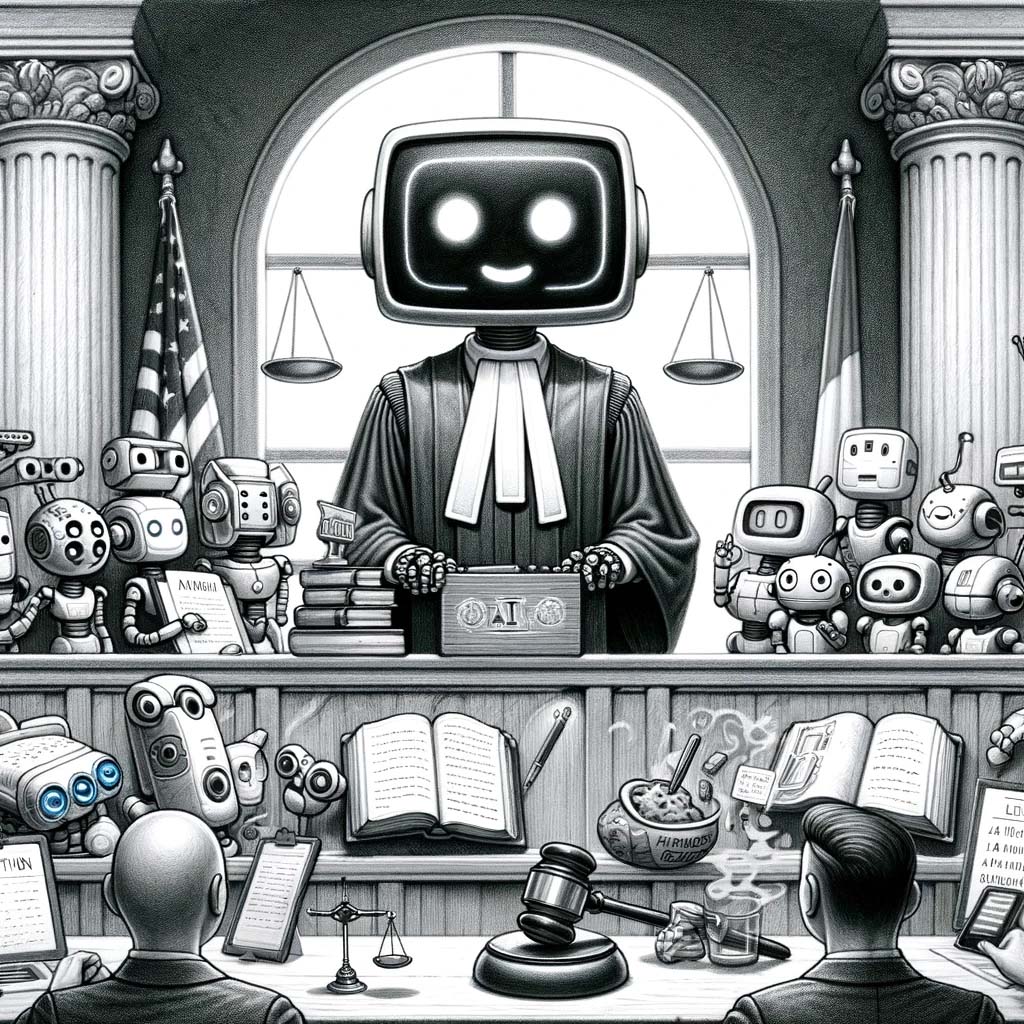AI Governance
Imagine you're the captain of a large, sophisticated ship. This ship is not ordinary; it's equipped with the most advanced technologies, capable of navigating itself and making decisions to ensure a smooth voyage. However, as the captain, you must set the rules, guidelines, and frameworks to ensure that this technology is used wisely, ethically, and effectively. This responsibility mirrors the concept of "AI Governance" in the world of Artificial Intelligence (AI) and Machine Learning (ML).
In Topics: AI Governance | Artificial Intelligence (AI) | Core Applications | Ethical AI, Social Implications and Cultural Considerations | Future Directions, Trends and Challenges | Privacy and Security

Figure: A charming illustration of "AI Governance".
What is AI Governance?
AI Governance encompasses the policies, practices, and frameworks that guide how AI technologies are developed, deployed, and used in society. It's about ensuring that AI works in the best interest of humanity, adhering to ethical standards, respecting privacy, and promoting fairness, accountability, and transparency.
Key Aspects of AI Governance:
Ethical Guidelines: Just as a captain ensures the ship's journey respects maritime laws and ethical standards, AI Governance involves setting ethical guidelines for AI development and use, focusing on fairness, non-discrimination, and the well-being of individuals.
Regulatory Compliance: AI Governance requires adherence to laws and regulations, similar to how a ship must comply with international maritime regulations. This includes data protection laws, privacy regulations, and industry-specific guidelines.
Transparency and Accountability: In AI Governance, there's a push for transparency in how AI systems make decisions and accountability for those decisions, akin to how a ship's log keeps a transparent record of the voyage and decisions made along the way.
Public Engagement: Just as a ship's journey might be influenced by the needs and concerns of its passengers, AI Governance involves engaging with the public, stakeholders, and experts to ensure AI technologies serve the broader interests of society.
Examples of AI Governance in Action:
AI in Healthcare: Implementing AI Governance in healthcare might involve setting strict privacy protections for patient data, ensuring AI diagnostic tools are unbiased and accurate, and clearly explaining AI-assisted decisions to patients and healthcare professionals.
Autonomous Vehicles: For self-driving cars, AI Governance includes establishing safety standards, ensuring the technology can handle ethical dilemmas (like split-second decisions in emergencies), and making the system's decision-making process understandable to regulators and users.
Content Moderation on Social Platforms: AI Governance in this context involves creating guidelines to ensure AI-driven content moderation respects freedom of expression while effectively identifying and mitigating harmful content, with clear avenues for human review and appeals.
Remember:
AI Governance is akin to setting the course for a ship equipped with powerful, autonomous technologies. It's about steering the development and application of AI in a direction that is safe, ethical, and aligned with human values and societal norms. By establishing clear guidelines, regulatory frameworks, and mechanisms for transparency and accountability, AI Governance ensures that the AI "ship" navigates the vast "ocean" of possibilities responsibly, bringing benefits to society while minimizing risks and harms.
See also: Artificial General Intelligence (AGI) | Artificial Intelligence (AI) | Ethical AI Principles
